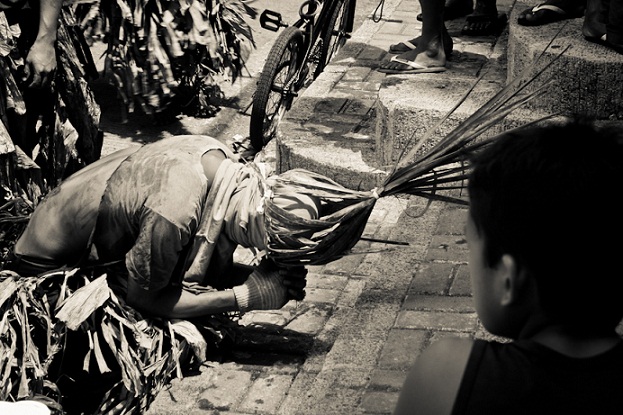Text by KIMMY BARAOIDAN
Photos by CHRIS QUINTANA and KIMMY BARAOIDAN
PAKIL, Laguna–In the small town of Pakil, Laguna resides a group of men who call themselves Hugas Dugo. Most members of the group are residents of the town, who, every Good Friday, transform from everyday townspeople into faceless flagellants.
The group was formed in the ‘80s, and its members since then had been performing self-flagellation every Lenten season.
Hugas Dugo is now a mix of young blood and old folk. Usually it is the younger generation that does the self-flagellation, and the older men are the ones who take charge of scheduling the flagellants into shifts, which would run from morning until late afternoon; cooking meals for the flagellants; manning the assembly area.
This year their home base was located under a bridge. Members bring contributions for the flagellants’ food and drinking water.
Flagellants first change into some old shirts, usually with long sleeves. The backs of their shirts are then cut to expose their backs. Dried banana leaves are stringed together to make a sort of skirt, which has a practical purpose – to catch the blood that will drip from their backs when they start beating themselves. For the facemasks, they make use of old cloth or bonnets and cut holes in them to expose the eyes. They also use coconut leaves as added decoration to their facemasks.
Before taking to the streets, the flagellants flog their lower backs with their whips, which usually have wood strips at the end that make a clinking sound when they hit the back. Once their lower backs are red and swollen, they are cut with blades by assigned elderly members of the group. Cuts range from 15 to 25 marks, depending on the width of the flagellants’ backs. With blood flowing from their backs, they now parade the streets and flog themselves during the whole procession.
They stop at designated stations along the way, where they lie face down on the street and have their backs cut again. Some even have their wounded backs hit with a leather belt. Their last stop is in front of the Church of San Pedro de Alcantara, which houses the Nuestra Señora de los Dolores de Turumba (Our Lady of Sorrows of Turumba). The flagellants’ backs are cut and hit for the last time, and they pause for a moment to kneel and pray. They then march back to the bridge to clean up and rest.
Upon the return of the flagellants to their assembly area, they peel off their soiled shirts, banana leaves, and facemasks, and burn them. They wash their whips and their bodies while an elderly squeezes their wounds to draw out remaining blood. Warm food awaits the weary and wounded flagellants.
The scars that the flagellants of Hugas Dugo bear may not be completely healed until the next Holy Week, but one thing is for sure – they will be back, perhaps under this same bridge, and will continue to partake in this unique way of bloodshed as a penance for sins they have committed.
